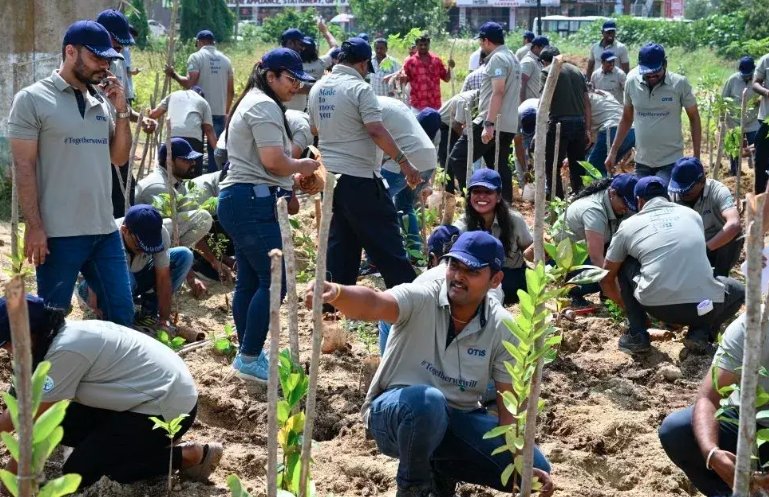Scotland is rolling out tiny forests in urban spots to tackle climate change and boost nature. These small, dense woodlands, planted using a Japanese method, are popping up near schools and hospitals, with locals joining in to create green havens amid city life.
This push comes as cities worldwide seek ways to fight rising temperatures and loss of wildlife. In Scotland, the initiative ties into broader efforts to make towns greener and healthier for everyone.
What Makes Tiny Forests Special
Tiny forests pack hundreds of native trees into areas as small as a tennis court. They grow fast and create rich habitats that support birds, insects, and small animals.
Unlike regular tree planting, these forests use a dense setup that mimics natural woodlands. This approach helps them thrive in tough urban settings, where space is tight and pollution is high.
Experts say these mini woodlands can mature in just a few years, much quicker than traditional forests. They draw on local plant species to ensure they fit well with the surrounding environment.

The Miyawaki Method Behind It All
The method comes from Akira Miyawaki, a Japanese botanist who developed it in the 1970s. It focuses on planting trees close together to encourage quick growth and strong roots.
In practice, workers prepare the soil with nutrients, then plant a mix of tree types in layers. This creates a self-sustaining ecosystem that needs little upkeep after the first couple of years.
Scotland has adapted this for its climate, using native species like oak, birch, and rowan. The result is forests that not only survive but also help with local issues like flooding.
Recent projects show how this method scales up. For instance, groups plant these in unused city lots, turning barren spots into vibrant green areas.
One key step involves community involvement, where schools and residents help with planting days. This builds a sense of ownership and educates people about nature.
Key Benefits for Environment and People
These tiny forests clean the air by absorbing pollutants and carbon dioxide. They also soak up rainwater, reducing flood risks in rainy Scottish cities.
On the biodiversity front, they attract a wide range of wildlife, from butterflies to hedgehogs. This helps reverse the decline in urban animal populations.
For people, being near these green spaces improves mental health and encourages outdoor activities. Studies show that access to nature lowers stress and boosts well-being.
Here are some standout advantages:
- Faster growth: Up to 10 times quicker than standard planting.
- Carbon capture: Absorbs more CO2 per square foot than open lawns.
- Low maintenance: Becomes self-reliant after initial care.
- Community ties: Brings neighbors together for planting events.
In terms of climate action, these forests align with global goals. They contribute to Scotland’s target of net-zero emissions by 2045, supporting efforts like rewilding and urban greening.
Recent Initiatives Across Scotland
In 2025, Scotland has seen a surge in tiny forest projects, with over 100 sites planned or underway. Cities like Glasgow and Edinburgh lead the way, planting near public buildings.
One major effort is the Wee Forests program, which aims to create small woodlands in urban areas. This ties into national plans for more green spaces amid growing climate concerns.
Communities play a big role, with children from schools helping to plant saplings. Hospitals have joined too, using the forests for patient therapy and relaxation areas.
| Aspect | Tiny Forests | Traditional Planting |
|---|---|---|
| Space Needed | Tennis court size | Large open areas |
| Growth Time | 3-5 years to mature | 20+ years |
| Biodiversity Boost | High, with dense layers | Moderate, spaced out |
| Cost per Area | Higher upfront, low long-term | Lower initial, ongoing care |
| Urban Fit | Excellent for cities | Better for rural spots |
These projects build on earlier UK efforts, where hundreds of similar forests have appeared since 2020. Scotland’s version focuses on native plants to handle local weather patterns.
Funding comes from government grants and charities, making it accessible for local groups. This year alone, initiatives have planted thousands of trees, with more set for fall.
Challenges and What Lies Ahead
Not everything is smooth. Urban soil can be poor, requiring extra preparation before planting. Pests and vandalism sometimes pose issues in city settings.
Experts note that while tiny forests help, they are part of a bigger picture. Combining them with other green efforts, like parks and green roofs, maximizes impact.
Looking forward, Scotland plans to expand these to more towns by 2030. This could inspire other countries facing similar urban and climate challenges.
Share your thoughts on tiny forests in the comments below, and spread the word by sharing this article with friends who care about green cities.


















